
Adobe Flash is a multimedia software platform used for production of animations, rich internet applications, desktop applications, mobile apps, mobile games, and embedded web browser video players.

iTunes is a software program that acts as a media player, media library, mobile device management utility, and the client app for the iTunes Store. Developed by Apple Inc., it is used to purchase, play, download, and organize digital multimedia, on personal computers running the macOS and Windows operating systems, and can be used to rip songs from CDs, as well as play content with the use of dynamic, smart playlists. Options for sound optimizations exist, as well as ways to wirelessly share the iTunes library.

Android is a mobile operating system based on a modified version of the Linux kernel and other open-source software, designed primarily for touchscreen mobile devices such as smartphones and tablets. Android is developed by a consortium of developers known as the Open Handset Alliance, though its most widely used version is primarily developed by Google. It was unveiled in November 2007, with the first commercial Android device, the HTC Dream, being launched in September 2008.

iOS is a mobile operating system developed by Apple Inc. exclusively for its hardware. It is the operating system that powers many of the company's mobile devices, including the iPhone; the term also includes the system software for iPads as well as on the iPod Touch devices. It is the world's second-most widely installed mobile operating system, after Android. It is the basis for three other operating systems made by Apple: iPadOS, tvOS, and watchOS. It is proprietary software, although some parts of it are open source under the Apple Public Source License and other licenses.

The iOS SDK, formerly the iPhone SDK, is a software development kit (SDK) developed by Apple Inc. The kit allows for the development of mobile apps on Apple's iOS and iPadOS operating systems.
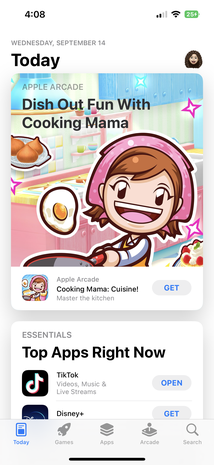
The App Store is an app marketplace developed and maintained by Apple Inc., for mobile apps on its iOS and iPadOS operating systems. The store allows users to browse and download approved apps developed within Apple's iOS SDK. Apps can be downloaded on the iPhone, iPod Touch, or iPad, and some can be transferred to the Apple Watch smartwatch or 4th-generation or newer Apple TVs as extensions of iPhone apps.
iOS is a mobile operating system developed by Apple Inc. and was first released as iPhone OS in June 2007, coinciding with the launch of the first generation iPhone. iPhone OS was renamed iOS following the release of the iPad, starting with iOS 4. With iOS 13, Apple began offering a separate operating system, iPadOS, for the iPad. iOS is also the foundation of the newer audioOS and tvOS, and shares some of its code with macOS. New iOS versions are released every year alongside new iPhone models. From its launch in 2007 until 2010, this occurred in June or July, since then, new major versions are released in September or October. Since the launch of the iPhone in June 2007, there have been 16 major releases of iOS. The current major version of iOS is iOS 16, released in September 2022.
On Apple devices running iOS and iOS-based operating systems, jailbreaking is the use of a privilege escalation exploit to remove software restrictions imposed by the manufacturer. Typically it is done through a series of kernel patches. A jailbroken device permits root access within the operating system and provides the right to install software unavailable through the App Store. Different devices and versions are exploited with a variety of tools. Apple views jailbreaking as a violation of the end-user license agreement and strongly cautions device owners not to try to achieve root access through the exploitation of vulnerabilities.
Apache Cordova is a mobile application development framework created by Nitobi. Adobe Systems purchased Nitobi in 2011, rebranded it as PhoneGap, and later released an open-source version of the software called Apache Cordova. Apache Cordova enables software programmers to build hybrid web applications for mobile devices using CSS3, HTML5, and JavaScript, instead of relying on platform-specific APIs like those in Android, iOS, or Windows Phone. It enables the wrapping up of CSS, HTML, and JavaScript code depending on the platform of the device. It extends the features of HTML and JavaScript to work with the device. The resulting applications are hybrid, meaning that they are neither truly native mobile application nor purely Web-based. They are not native because all layout rendering is done via Web views instead of the platform's native UI framework. They are not Web apps because they are packaged as apps for distribution and have access to native device APIs. Mixing native and hybrid code snippets has been possible since version 1.9.

iOS 4 is the fourth major release of the iOS mobile operating system developed by Apple Inc., being the successor to iPhone OS 3. It was announced at the Apple Special Event on April 8, 2010, and was released on June 21, 2010. iOS 4 is the first iOS version issued under the "iOS" rebranding, dropping the "iPhone OS" naming convention of previous versions. It was succeeded by iOS 5 on October 12, 2011.

The iPhone is the first iPhone model and the first smartphone designed and marketed by Apple Inc. After years of rumors and speculation, it was officially announced on January 9, 2007, and was released in the United States on June 29, 2007.
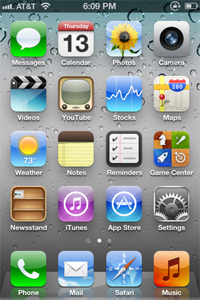
iOS 5 is the fifth major release of the iOS mobile operating system developed by Apple Inc., being the successor to iOS 4. It was announced at the company's Worldwide Developers Conference on June 6, 2011, and was released on October 12, 2011. It was succeeded by iOS 6 on September 19, 2012.
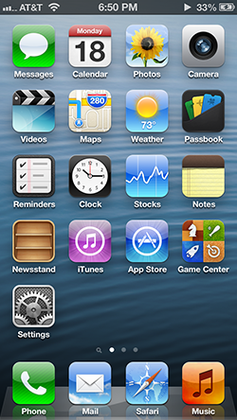
iOS 6 is the sixth major release of the iOS mobile operating system developed by Apple Inc, being the successor to iOS 5. It was announced at the company's Worldwide Developers Conference on June 11, 2012, and was released on September 19, 2012. It was succeeded by iOS 7 on September 18, 2013.

The first-generation iPad is a tablet computer designed and marketed by Apple Inc. as the first device in the iPad lineup of tablet computers. The device features an Apple A4 SoC, a 9.7 in (250 mm) touchscreen display, and, on certain variants, the capability of accessing cellular networks. Using the iOS operating system, the iPad can play music, send and receive email and browse the web. Other functions, which include the ability to play games and access references, GPS navigation software and social network services can be enabled by downloading apps.

Kevin M. Lynch is an American software developer. He is currently the vice president of technology at Apple Inc., joining in 2013 after working as the chief technology officer of Adobe Systems. Lynch has been responsible for developing the software of Apple's smartwatch project, the Apple Watch, a device he demonstrated at the September 2014 Apple Launch Event.
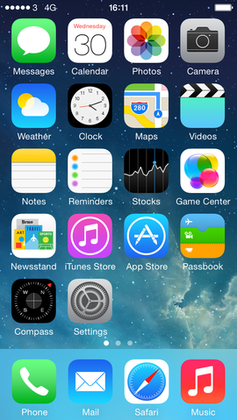
iOS 7 is the seventh major release of the iOS mobile operating system developed by Apple Inc., being the successor to iOS 6. It was announced at the company's Worldwide Developers Conference on June 10, 2013, and was released on September 18 of that year. It was succeeded by iOS 8 on September 17, 2014.

iOS 8 is the eighth major release of the iOS mobile operating system developed by Apple Inc., being the successor to iOS 7. It was announced at the company's Worldwide Developers Conference on June 2, 2014, and was released on September 17, 2014. It was succeeded by iOS 9 on September 16, 2015.

iOS 9 is the ninth major release of the iOS mobile operating system developed by Apple Inc., being the successor to iOS 8. It was announced at the company's Worldwide Developers Conference on June 8, 2015, and was released on September 16, 2015. It was succeeded by iOS 10 on September 13, 2016.
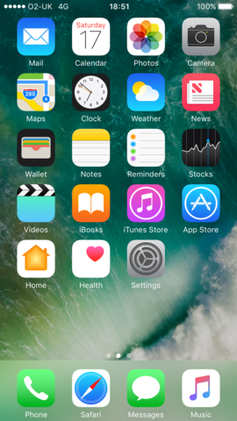
iOS 10 is the tenth major release of the iOS mobile operating system developed by Apple Inc., being the successor to iOS 9. It was announced at the company's Worldwide Developers Conference on June 13, 2016, and was released on September 13, that year. It was succeeded by iOS 11 on September 19, 2017.
The marketing of Apple Inc. encompasses the company's advertising, distribution, and branding. After Steve Jobs returned to Apple in 1997, he made industrial design a key element of the company's branding strategy. Apple's public image has been shaped by several acclaimed advertisements made in partnership with TBWA\Chiat\Day, including 1984 and Get a Mac. Many of Apple's product announcements occur during keynote speeches the company gives several times a year, at Apple Special Events or at Apple's Worldwide Developers Conference, that help reinforce Apple's brand.
















